Tom's Guide Verdict
HTC's U Ultra is a gorgeous (and expensive) flagship phone, but with HTC's Sense Companion delayed until late April, its most important feature may come too late.
Pros
- +
Gorgeous jewel-like design
- +
Handy second screen
- +
Top-of-the-line performance
- +
Big, bright screen
- +
Sharp, 16-MP selfie cam
Cons
- -
Expensive
- -
Lackluster battery life
- -
No headphone jack
- -
HTC Sense Companion won't be available until late April
Why you can trust Tom's Guide
While HTC's Vive virtual-reality headset has generated lots of buzz, the company's latest batch of phones hasn't received nearly as much attention. However, with a new flagship phone sporting a high-res, 16-megapixel selfie cam; a handy second screen; and an irresistible liquid-metal design, the HTC U Ultra has serious potential. But with a starting price of $749, subpar battery life and a digital assistant that’s not yet ready for its debut, the U Ultra is an alluring phone I wish HTC had spent a little more time polishing.
Design: A precious gem
With its unique liquid-metal finish and a range of eye-catching finishes (blue, white, black and pink), the HTC U Ultra looks a lot like an expensive jewel. I appreciate the little touches on the U Ultra, like the way HTC color-matched the metal band running around the outside of the phone, although I wish the company had given the front of our electric-blue unit the same shiny-blue treatment.
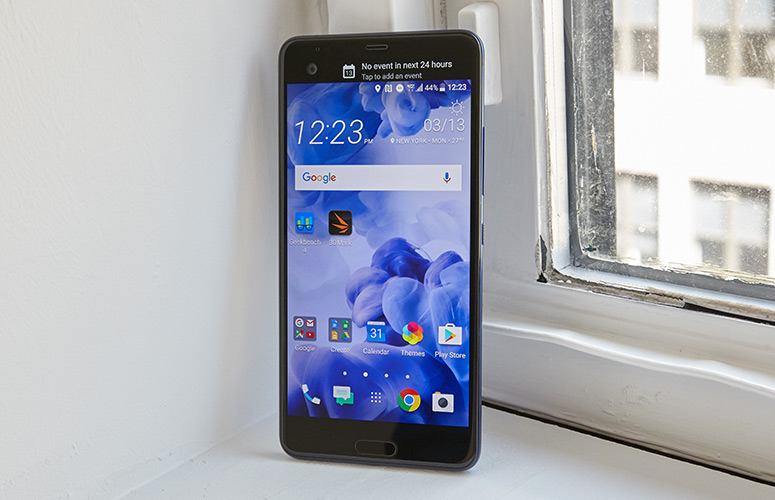
Below the phone’s 5.7-inch display, there's a capacitive-touch home button with a built-in fingerprint reader, along with two more touch buttons for Back and Recent Apps (one on each side). On the bottom, there's a handy USB Type-C port for transferring data and charging.
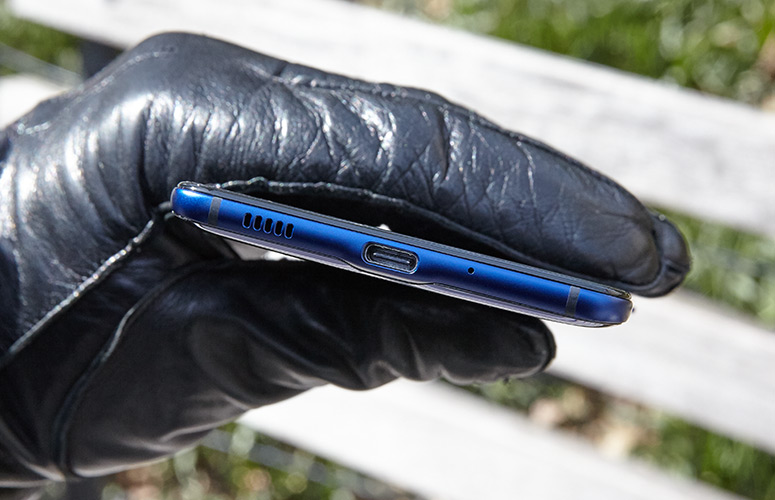
However, one thing you won't find is a headphone jack. HTC includes a pair of USB Type-C headphones in the box, but the lack of a traditional 3.5mm audio jack could be a deal breaker for some people.

Size-wise, though both the Google Pixel XL and the HTC U Ultra have 5.7-inch screens, the U Ultra is slightly larger and heavier, at 6.39 x 3.14 x 0.31 inches and 6 ounces, versus 6.09 x 2.98 x 0.33 inches and 5.93 ounces for the Pixel XL. When you compare the U Ultra to the new breed of smartphones with 18:9 displays, including the LG G6 (5.86 x 2.83 x 0.31 inches), the U Ultra’s screen-to-body ratio makes it feel like a considerably larger device.
Display: Bright and beautiful, with a cherry on top
Even though I tend to prefer phones with AMOLED screens because of their wider color gamuts and better contrast, the U Ultra's 5.7-inch quad-HD LCD display leaves very little to complain about.
For people who are really picky about color, the U Ultra comes with a color-temp slider for making the screen look warmer or cooler.
It's bright, it's colorful, and when I used it to watch a trailer for Baby Driver, the U's screen made the swirling lights of the pursuing police cars and Baby's bright-red Subaru really pop.
Get instant access to breaking news, the hottest reviews, great deals and helpful tips.
For people who are really picky about color, the U Ultra even comes with a color-temp slider for making the screen look warmer or cooler. There’s also a blue-light filter for reducing eyestrain and making it easier to fall asleep at night.
But there's more: HTC has stolen a page from the LG V20's book and fitted the U Ultra with a secondary, 2-inch, 160 x 1440 screen above the main, 5.7-inch display. Its main purpose is to serve as a place for notifications from HTC's Sense Companion (more on that later), but it can also be used to open up recently used apps, control music and check the weather or time. Unlike the second display on the LG V20, though, the U Ultra's bonus screen doesn't stay on all the time. You can double-tap it to wake it up and view it without turning on the main display.
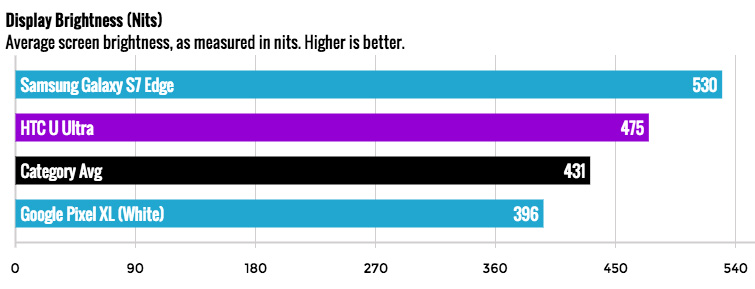
Using a light meter, we found that the U Ultra's primary display reached a peak brightness of 475 nits, which is 20 percent brighter than the Google Pixel XL (396 nits). The Samsung Galaxy S7 was slightly brighter, at 530 nits, while the smartphone average is significantly lower, at 431 nits.
For an LCD screen, the U Ultra's color range is pretty solid. It covered 149 percent of the sRGB gamut, compared with 130 percent for the LG V20. However, phones with AMOLED screens, like the Pixel XL and the S7 Edge, offer significantly more colorful viewing experiences, as they covered 191 percent and 189 percent of the spectrum, respectively.

As for color accuracy, the U Ultra's Delta-E rating of 3.33 is pretty decent, beating out the Pixel XL's rating of 5.88 and barely falling short of the S7 Edge's rating of 2.9. (Numbers closer to zero are better.)
Audio: HTC does it right
I'll never understand why smartphone-makers think it's OK to deliver weak, one-sided audio. Thankfully, that's something HTC has long understood. So, in addition to a traditional, bottom-firing speaker, the U's earpiece puts out sound that delivers a true stereo audio experience. When you compare the U Ultra to handsets like the Galaxy S7 which has a only single-speaker setups, or even the iPhone 7 which has a similar earpiece plus bottom speaker arrangement, the difference is pretty dramatic.
When I listened to Chilly Gonzales' "Knight Moves," the U Ultra produced more balanced, richer piano chords and deeper bass than both the Galaxy S7 and the iPhone 7.
For times when you want to record sound, the U Ultra comes with four omnidirectional microphones that, according to HTC, let the U Ultra record immersive, 360-degree audio. However, while recordings captured by the U Ultra do sound slightly more detailed than those captured by competing phones, the audio on the recordings is not nearly as striking as the sound emitted from the phone's stereo speakers.
Where's the HTC Sense Companion?
The biggest caution flag for the HTC U Ultra has to do with its most important feature — or, more accurately, the lack of it. When HTC announced the U Ultra, the phone-maker touted its new Sense Companion as a personal assistant that would learn about you and the ways you use your phone to provide you with timely reminders and answers using its built-in voice recognition.
Although the U Ultra is now available, the Sense Companion isn’t. And HTC says the feature won't be ready until at least late April (on the Google Play store). With Google bringing Google Assistant to phones running Android 6.0 and above and the Galaxy S8 reportedly including a digital assistant of its own, it really makes you wonder if HTC's Sense Companion will be too little, too late.
On top of that, the HTC 10 is already one of the handsets confirmed to be getting Google Assistant, which means it's possible that the U Ultra will get it, too. That would mean the Ultra might have not one, but two built-in digital assistants. And although we have yet to test the Sense Companion, it's really hard to imagine HTC's assistant beating Google and its deep reservoir of search-based knowledge.
Cameras: Good, but a tier below Apple, Samsung and Google
For your picture-taking needs, the U Ultra sports a 12-megapixel rear camera and a surprising 16-MP front cam that's one of the highest-resolution selfie shooters available.
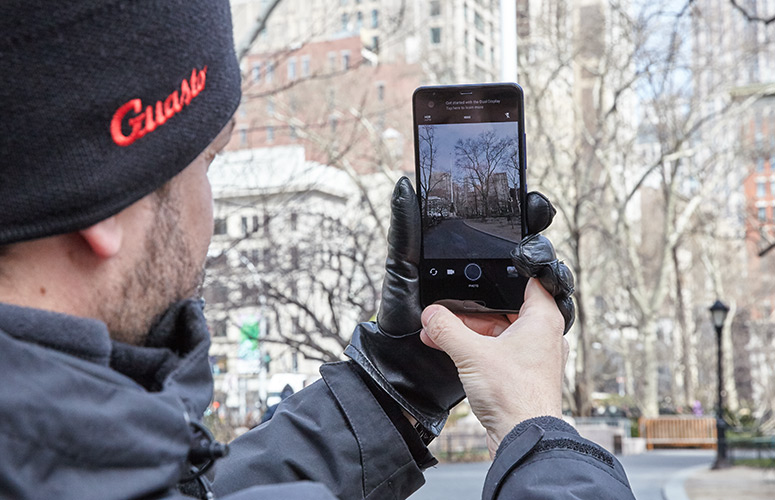
Both cameras feature HTC's UltraPixel technology, which is supposed to help deliver more light to the sensor in challenging photo-taking situations. But as we discovered, the U Ultra’s shooter still can't quite compete with cameras from the big three (Apple, Samsung and Google).
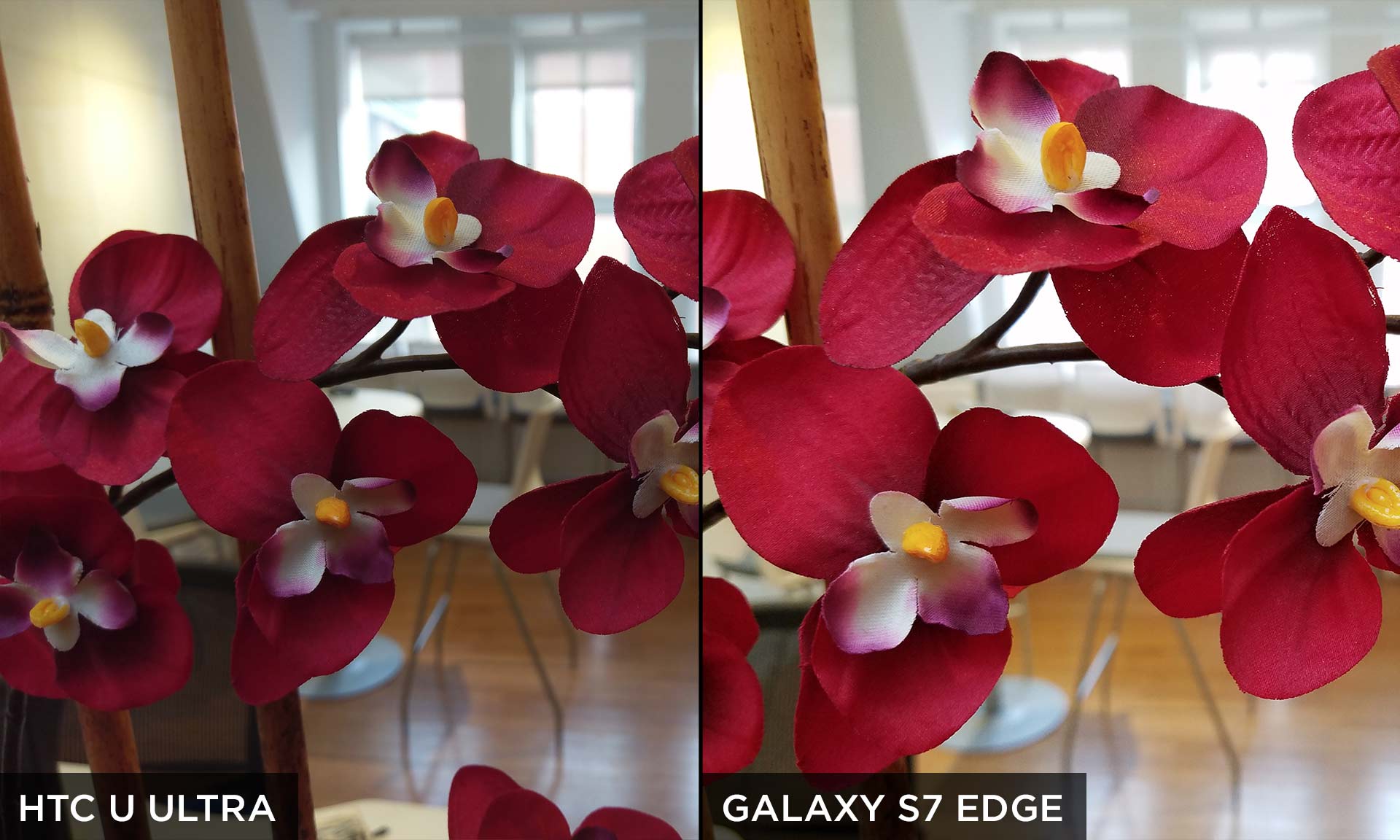
In a side-by-side comparison of a close-up on some silk flowers, both the U Ultra and the Samsung S7 Edge did a solid job of capturing the fine weave of the faux flowers. However, the U Ultra fell behind on color saturation. The maroon flower petals in the S7 Edge's pic jumped out with bold, rich reds, while the U Ultra's photo appeared darker and had more muted tones.
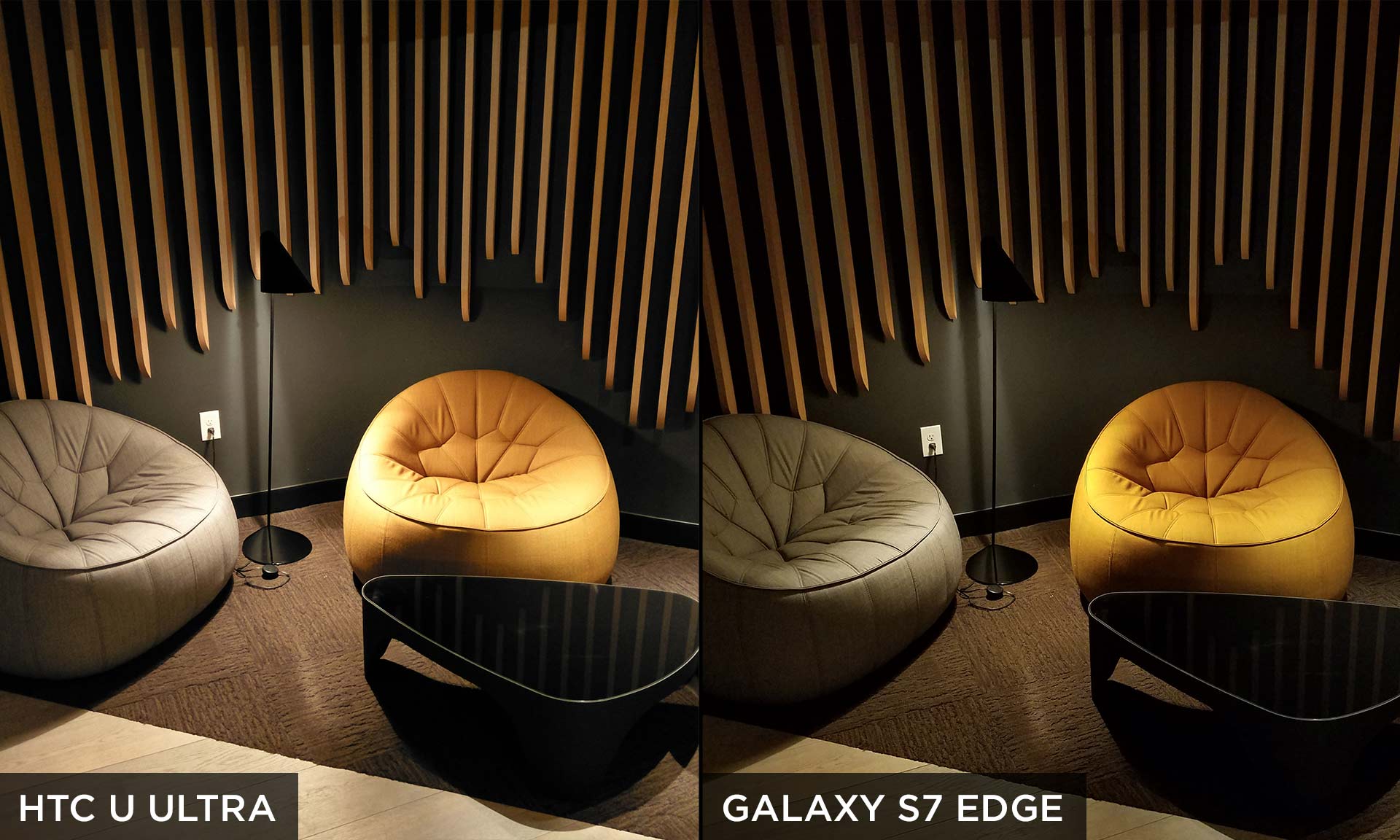
Indoors in low light, HTC's UltraPixel tech allowed the U Ultra to capture a shot that was less grainy than the S7 Edge's pic. However, you can also see how the U Ultra struggled with exposure and dynamic range by looking at the blown-out highlights on the yellow chair and white table.
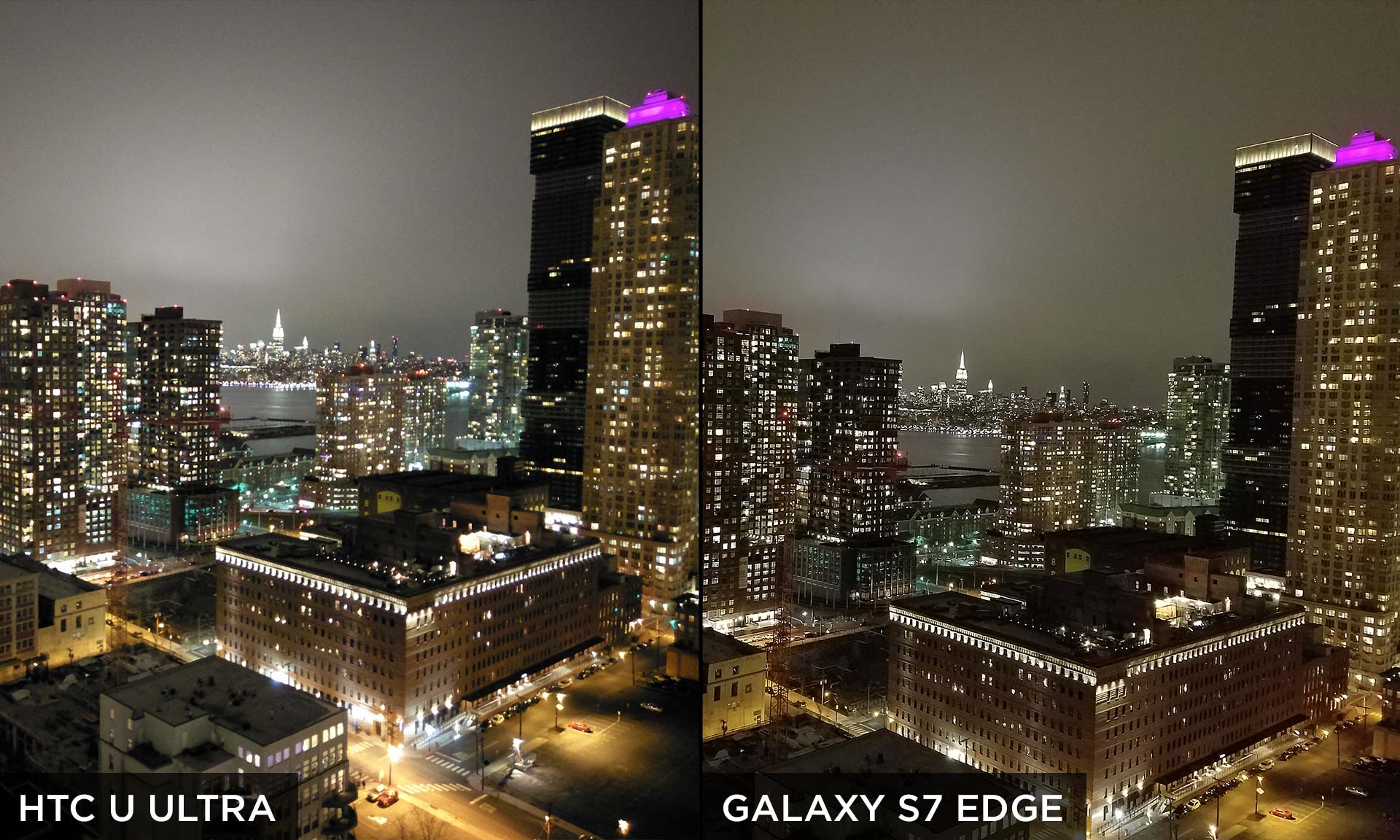
When I took both phones out to shoot a late-night cityscape, the U Ultra's photo demonstrated a need for better image processing. Both the S7 Edge and the U Ultra have 12-MP rear cameras, but the S7 Edge's pic looked significantly sharper, especially on things like the windows and hard lines on the buildings.
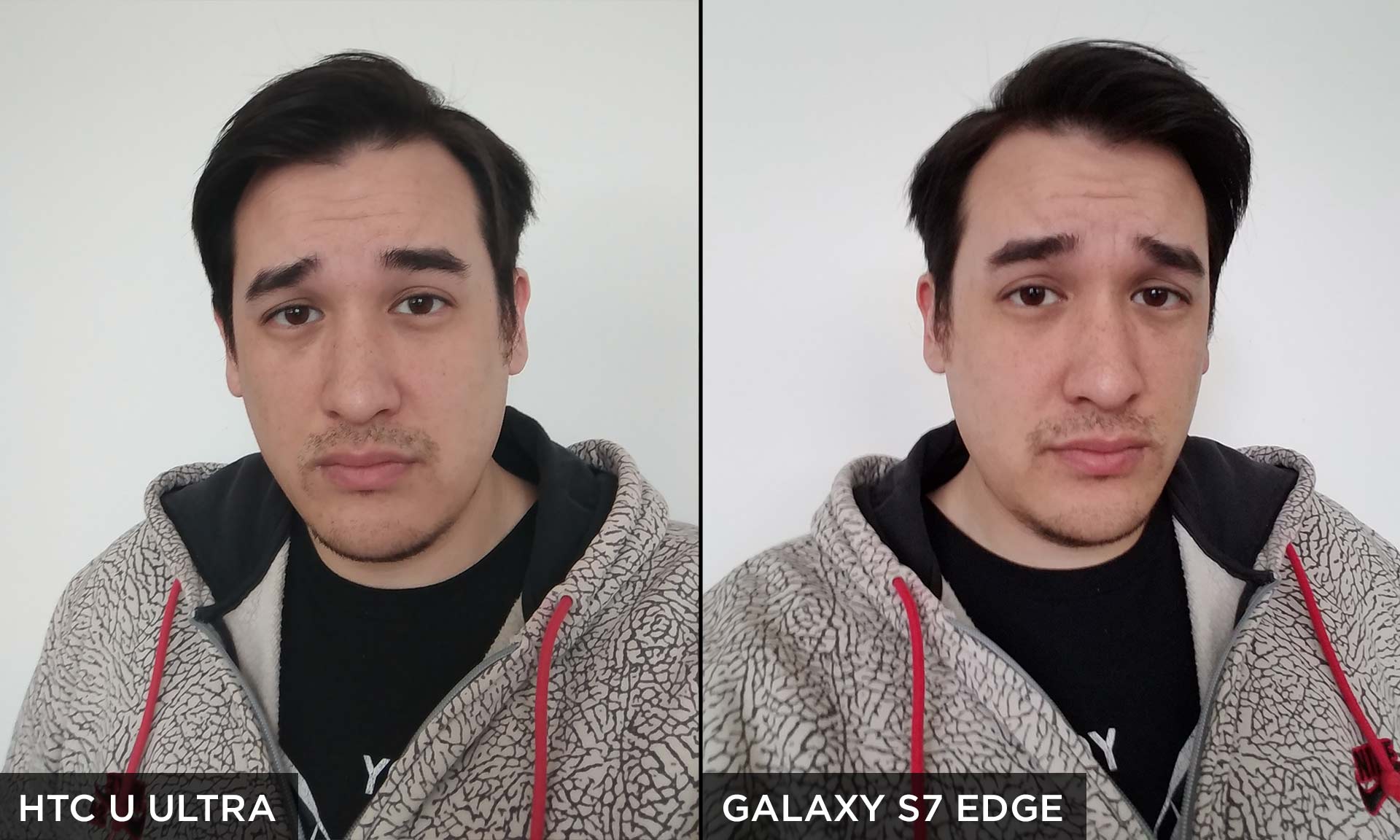
As for selfies, the situation was almost completely reversed. The U Ultra's 16-MP front cam captured much more detailed pictures than the 8-MP front cam on the S7 Edge, but that’s only part of the story. Because the U Ultra’s lens isn't as distorted, single-person selfies look more natural.
Performance: Top-notch performance, for now
Packing a Qualcomm Snapdragon 821 processor, 4GB of RAM, 64GB of storage and microSD card expansion, the U Ultra’s power is on a par with that of other flagship phones, including the Google Pixel and the LG G6. True performance enthusiasts might want to wait for a phone with Qualcomm’s newer Snapdragon 835 chip, but the U Ultra didn’t disappoint in our tests.

On Geekbench 4, which measures overall system performance, the U Ultra scored 4,085, which compares favorably to competing flagship phones. Equipped with a slightly older Snapdragon 820 chip, Samsung's Galaxy S7 Edge turned in a slightly lower 4,085 score, while the Google Pixel XL, which features a Snapdragon 821 with a higher clock speed, performed just a bit better (4,146).

As for graphics performance, the U Ultra scored 30,714 on 3DMark's Ice Storm Unlimited test, which also was similar to scores from other premium handsets, including the Pixel XL (28,182) and the S7 Edge (29,951). The smartphone average is almost 50 percent lower, at 17,460.
Finally, the U Ultra's score of 52 on the JetStream 1.1 JavaScript test fell between the scores from the Pixel XL (55.93) and the S7 Edge (49.9). This is a good indicator of web browsing performance.
Battery Life: Sadly, below average
After the U Ultra's price, its battery life is its second-biggest disappointment. On the Tom's Guide Battery Test (continuous web surfing over AT&T 4G LTE), the Ultra lasted just 8 hours and 7 minutes.
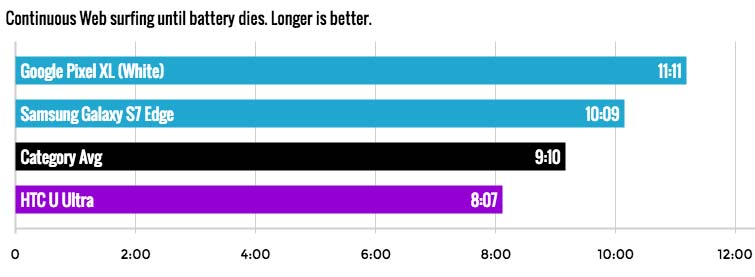
That's more than an hour less than the smartphone average (9:10), 2 hours less than the S7 Edge (10:09) and 3 hours less than the Google Pixel XL (11:11).
At least the U Ultra offers decent endurance on standby mode. It lost less than 15 percent of its battery after being left unattended over a weekend.
Software and OS: Fresh and clean
Equipped with Android Nougat 7.0 and HTC's Sense UI, the U Ultra features a pretty up-to-date and minimalist take on Google's mobile OS. There's not a ton of bloat, although Instagram, Facebook and News Republic are preinstalled. HTC's UI customizations, such as BlinkFeed (which you can locate by swiping all the way to the right) is one of the best built-in newsfeeds you'll find on a phone.
As someone who gets tired of Material Design from time to time, I’ve found that HTC's Themes app is a fast and simple way to spice up your phone's home screen, without the hassle of more complicated Android launcher apps such as Nova Launcher.
Bottom Line
The HTC U Ultra is a gorgeous phone with a unique jewel-like finish, top-notch performance and one of the best selfie cameras you can get on a phone right now. I also like the handy second screen and small touches, like BlinkFeed and HTC's Themes app. Plus, HTC's stereo BoomSound speakers remain some of the best in the biz. But with a starting price of $749, the U Ultra is quite expensive, too.
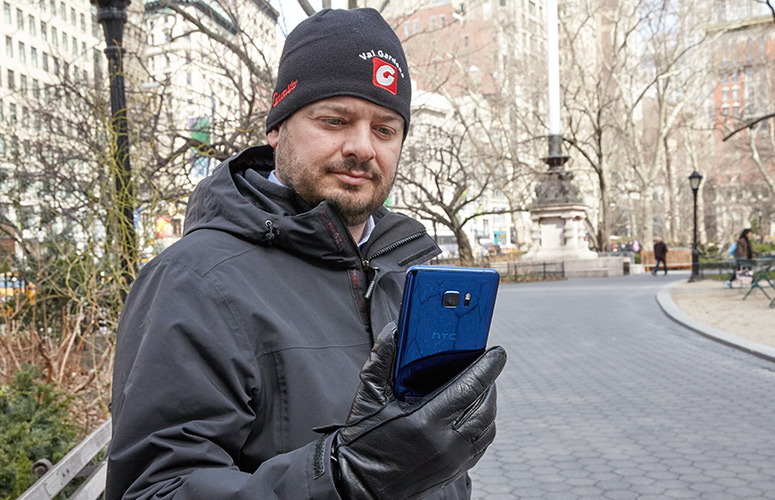
Yes, the Google Pixel XL costs about the same, but it offers an extra 3 hours of battery life, a better rear camera and faster Android updates that come straight from Google. Then there's the Samsung S7 Edge, which can cost up to $200 less, and boasts a better screen, an equally eye-catching design and a better rear camera. Then there's Samsung's next flagship, the Galaxy S8, which will be officially unveiled in less than three weeks, on March 29.
With the U Ultra currently missing its most important feature, it's hard to fully recommend dropping $750 on this phone, and by the time HTC's Sense Companion is finally ready, it may be overtaken by other new devices.
Sam is a Senior Writer at Engadget and previously worked at Gizmodo as a Senior Reporter. Before that, he worked at Tom's Guide and Laptop Mag as a Staff Writer and Senior Product Review Analyst, overseeing benchmarks and testing for countless product reviews. He was also an archery instructor and a penguin trainer too (really).
-
Sidhanth "When you compare the U Ultra to handsets like the iPhone 7 or the Galaxy S7, which have only single-speaker setups, the difference is pretty dramatic."Reply
The iPhone 7 has a dual speaker setup similar - a bottom firing speaker and the earpiece doubling as a speaker. -
rutherfordsc @sidhanth, you are correct. What I meant to say is that compared to both single-speaker phones like the GS7 and phones like the iPhone 7 which has a similar two-speaker setup, the U Ultra's audio sounds significantly better.Reply -
Sidhanth Oh okay. I think the sentence could have been framed better for less ambiguity, such asReply
"When you compare the U Ultra to handsets like the iPhone 7 or the Galaxy S7, which only has a single-speaker setup, the difference is pretty dramatic."
-
Waazzupppp Lots of good stuff in here, one of the most complete reviews I've read of the Ultra. That said, Sense Companion is out already - released at publication time as a matter of fact, so if that is a helpful thing in the UX like I believe it is, then you should definitely update and rescore. As far as picking the rest of the device apart goes, I have to say that I disagree with your "Samsung Galaxy S7 Edge is the greatest phone ever" ideals. I didn't like the saturation of the S7, nor do I love it on my Note 5, it's too much and I had to tweak the screen to get it close to 'normal' for daily use, but...Reply
That said, I have really enjoyed my first week with the Ultra.
Screen - It's screen is large enough to multitask, and clear enough to see even the smallest details.
Battery - My experience is far different from yours. I am getting 16 hours of usage out of about 1/2 the battery. Scary long life, but I'll take it. This compares to about 6 hours of usage on my Note 5 in the same fashion.
Camera - Colors are a bit softer on the images in auto mode, but I get far better results with the Ultra than I get with the oversaturated Samsung cameras. I'm not a huge iPhone fan, but the results of the Ultra were definitely on par with the shots that friends with iPhones were taking at the same event. Where the Ultra really outshined everyone else in the camera department was shooting across a darkened theater and snapping action shots of the performers on stage. The quality was stunning. I would question the exposure point of the flower shot that you took before making any comments on that set of photos, it almost looks like the Samsung was calibrated to the flower and the HTC was done to the window, but I'm guessing at that.
Moving on to performance - The Ultra is smooth and fast and definitely ready to roll today. The S7 Edge, which again, I don't agree with it being the ultimate phone by any means, and Ultra are on par together at worst. Since that is still the best phone in Samsung's line up (remember their latest effort was pulled from the market for major issues) it's sad to think that a "non-flagship HTC" could hold its own against the reigning king.
Overall, I think the big thing that is missing from the review is how great the Ultra works and the experience that it gives. I don't think the average user will ever sit down and stream 8 hours of movies over their internet connection. I also don't think that the average user would want to plop down $750 on a device. I do think they would consider $32 a month though - and that's available from PayPal on the HTC site. In a world that blurs phones so easily, I agree that the Ultra isn't for everyone, but the fact that one of the bigger cons (no Sense Companion) has already been fixed, should tell you and your readers that the Ultra is for real.
